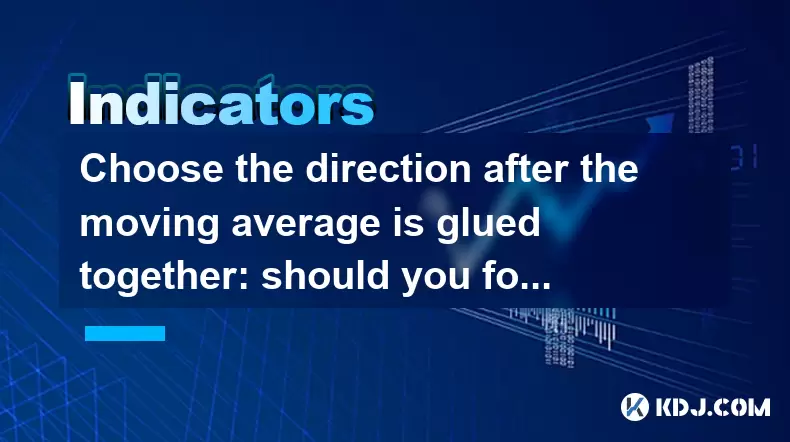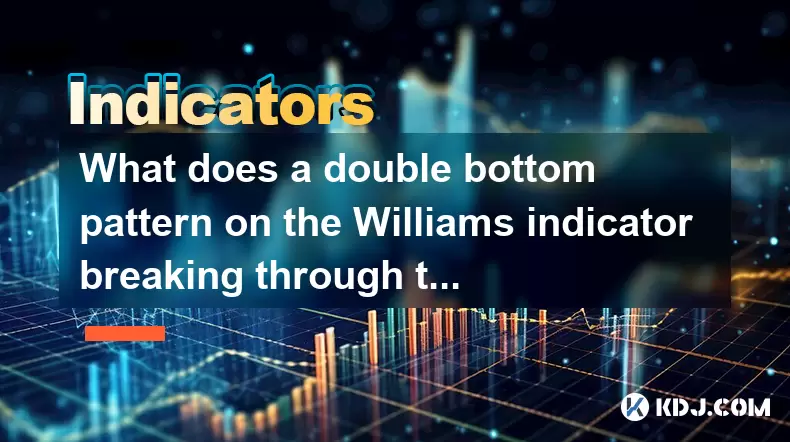-
 Bitcoin
Bitcoin $116400
-0.36% -
 Ethereum
Ethereum $4033
3.40% -
 XRP
XRP $3.302
-1.26% -
 Tether USDt
Tether USDt $1.000
-0.02% -
 BNB
BNB $796.1
1.67% -
 Solana
Solana $177.8
1.89% -
 USDC
USDC $0.9999
0.00% -
 Dogecoin
Dogecoin $0.2314
4.09% -
 TRON
TRON $0.3381
0.14% -
 Cardano
Cardano $0.7989
1.22% -
 Stellar
Stellar $0.4496
-1.84% -
 Chainlink
Chainlink $20.42
9.42% -
 Hyperliquid
Hyperliquid $41.17
0.88% -
 Sui
Sui $3.914
3.77% -
 Bitcoin Cash
Bitcoin Cash $584.7
1.52% -
 Hedera
Hedera $0.2632
-0.54% -
 Avalanche
Avalanche $24.09
3.40% -
 Ethena USDe
Ethena USDe $1.001
-0.02% -
 Litecoin
Litecoin $123.2
1.33% -
 Toncoin
Toncoin $3.318
-0.04% -
 UNUS SED LEO
UNUS SED LEO $8.984
-0.05% -
 Shiba Inu
Shiba Inu $0.00001323
2.85% -
 Uniswap
Uniswap $10.90
4.41% -
 Polkadot
Polkadot $3.999
3.34% -
 Dai
Dai $1.000
0.01% -
 Cronos
Cronos $0.1630
9.64% -
 Bitget Token
Bitget Token $4.484
0.82% -
 Monero
Monero $272.4
2.44% -
 Pepe
Pepe $0.00001173
6.03% -
 Aave
Aave $290.8
2.88%
Choose the direction after the moving average is glued together: should you follow the breakthrough?
When a cryptocurrency's price is glued to its moving average, traders should watch for a breakthrough and confirm it with high volume and additional indicators before entering a trade.
Jun 02, 2025 at 05:21 am

In the world of cryptocurrency trading, the moving average (MA) is a widely used technical analysis tool that helps traders identify trends and potential trading opportunities. When the price of a cryptocurrency is glued to its moving average, it can be a critical moment for traders. This article will explore the concept of moving averages, the implications of a price being glued to them, and the strategies traders might consider when a breakthrough occurs.
Understanding Moving Averages
Moving averages are calculated by taking the average price of a cryptocurrency over a specific period. Common types include the simple moving average (SMA) and the exponential moving average (EMA). The SMA gives equal weight to all prices in the period, while the EMA gives more weight to recent prices, making it more responsive to new information.
Traders use moving averages to smooth out price data and identify the overall direction of the market. A short-term moving average (e.g., 20-day MA) reacts more quickly to price changes, while a long-term moving average (e.g., 200-day MA) provides a broader view of the market trend.
The Phenomenon of Price Glued to Moving Averages
When the price of a cryptocurrency is glued to its moving average, it means that the price is closely tracking the moving average line without significant deviation. This can occur in both bullish and bearish markets and often indicates a period of consolidation or indecision in the market.
The phenomenon can be observed on various timeframes, from daily charts to hourly charts. Traders should pay close attention to these periods because they can signal an impending breakout or breakdown, which could lead to significant price movements.
Analyzing Breakthroughs After Price Gluing
A breakthrough occurs when the price moves decisively above or below the moving average after being glued to it. This can be a strong signal for traders to enter or exit positions. However, it's crucial to understand the context and confirm the breakthrough with other technical indicators.
When the price breaks above the moving average, it suggests that bullish momentum is building, and the trend might be shifting upwards. Conversely, a break below the moving average indicates bearish momentum and a potential downward trend.
Strategies for Following Breakthroughs
When deciding whether to follow a breakthrough after the price has been glued to the moving average, traders can consider several strategies:
Confirmation with Volume: High trading volume accompanying the breakthrough can validate the move. Traders should look for a significant increase in volume as the price breaks away from the moving average.
Use of Additional Indicators: Combining moving averages with other indicators like the Relative Strength Index (RSI) or the Moving Average Convergence Divergence (MACD) can provide additional confirmation. For example, an RSI reading above 70 might indicate overbought conditions, suggesting caution even after a bullish breakthrough.
Setting Stop-Loss Orders: To manage risk, traders should set stop-loss orders just below the moving average if entering a long position after a bullish breakthrough, or just above the moving average for a short position after a bearish breakthrough.
Monitoring Price Action: After a breakthrough, traders should closely monitor price action for signs of a false breakout. A false breakout occurs when the price moves beyond the moving average but quickly reverses back to the glued position.
Practical Example: Following a Breakthrough
Let's walk through a hypothetical example of how a trader might follow a breakthrough after the price has been glued to a 50-day moving average on a daily chart of Bitcoin (BTC).
Identify the Gluing: The trader observes that Bitcoin's price has been closely tracking the 50-day moving average for the past two weeks, with minimal deviation.
Watch for Breakthrough: The trader keeps an eye on the price for a decisive move above or below the 50-day moving average.
Confirm with Volume: When the price breaks above the 50-day moving average, the trader checks the volume. If the volume is significantly higher than the average volume over the past few days, it suggests strong bullish momentum.
Check Additional Indicators: The trader also checks the RSI, which is at 65, indicating that the market is not yet overbought.
Enter the Trade: Confident in the breakthrough, the trader enters a long position on Bitcoin.
Set Stop-Loss: The trader sets a stop-loss order just below the 50-day moving average to limit potential losses if the breakthrough turns out to be false.
Monitor Price Action: The trader continues to monitor Bitcoin's price action, ready to adjust the stop-loss or take profits if the price continues to rise.
Risk Management Considerations
While following breakthroughs can be a profitable strategy, it's essential to consider risk management. Traders should never risk more than they can afford to lose and should diversify their portfolios to spread risk.
Additionally, traders should be aware of the psychological aspects of trading. Fear and greed can cloud judgment, leading to impulsive decisions. Sticking to a well-thought-out trading plan and maintaining discipline can help mitigate these risks.
Frequently Asked Questions
Q: Can moving averages be used on any cryptocurrency?
A: Yes, moving averages can be applied to any cryptocurrency. However, the effectiveness of moving averages can vary depending on the liquidity and volatility of the cryptocurrency. More liquid assets like Bitcoin and Ethereum tend to produce more reliable signals.
Q: How do I choose the right timeframe for my moving average?
A: The choice of timeframe depends on your trading style. Short-term traders might use a 5-day or 10-day moving average, while long-term investors might prefer a 50-day or 200-day moving average. Experimenting with different timeframes and observing how they align with your trading goals can help you find the most suitable one.
Q: What should I do if the price breaks through the moving average but quickly reverses?
A: If the price breaks through the moving average but quickly reverses, it's likely a false breakout. In this case, you should exit any positions entered based on the breakthrough and reassess the market conditions. Waiting for another, more convincing breakthrough might be a better strategy.
Q: Is it necessary to use multiple moving averages for better trading decisions?
A: Using multiple moving averages, such as a short-term and a long-term moving average, can provide more comprehensive insights into market trends. For example, a crossover of a 50-day moving average above a 200-day moving average (known as a golden cross) can signal a strong bullish trend, while the opposite (a death cross) can indicate a bearish trend. However, it's not strictly necessary, and the effectiveness depends on your trading strategy and the specific cryptocurrency you are trading.
Disclaimer:info@kdj.com
The information provided is not trading advice. kdj.com does not assume any responsibility for any investments made based on the information provided in this article. Cryptocurrencies are highly volatile and it is highly recommended that you invest with caution after thorough research!
If you believe that the content used on this website infringes your copyright, please contact us immediately (info@kdj.com) and we will delete it promptly.
- Moat Stocks & Mega-Cap Momentum: July's Standout Performance
- 2025-08-09 12:30:12
- Injective (INJ) Eyes $15.39 Breakout Amidst Explosive Network Growth
- 2025-08-09 12:30:12
- HAT Token Mania: Price Surges, Crypto Auctions, and Meme Coin Mayhem
- 2025-08-09 11:10:11
- Undervalued Cryptos Primed for a 2025 Takeoff: MAGACOIN, TRX, and SUI Lead the Pack
- 2025-08-09 11:10:11
- Bitcoin Goes to Harvard: Ivy League Embraces Digital Assets
- 2025-08-09 10:50:12
- Bitcoin, BlockDAG, and Toncoin: Decoding the Crypto Buzz in NYC
- 2025-08-09 11:30:11
Related knowledge

What does it mean when the Triple Moving Average (TRIX) turns downward but the price doesn't fall?
Aug 09,2025 at 12:42pm
Understanding the Triple Moving Average (TRIX) IndicatorThe Triple Moving Average, commonly known as TRIX, is a momentum oscillator designed to filter...

What does it mean when the Williams' oscillator repeatedly hits bottoms but fails to rebound?
Aug 09,2025 at 09:28am
Understanding the Williams %R OscillatorThe Williams %R oscillator, developed by Larry Williams, is a momentum indicator used in technical analysis to...

What does a double bottom pattern on the Williams indicator breaking through the 50-day midline indicate?
Aug 09,2025 at 10:56am
Understanding the Williams %R IndicatorThe Williams %R indicator, developed by Larry Williams, is a momentum oscillator that measures overbought and o...

What does it mean when the MACD-histogram turns from green to red but the DIF line fails to form a golden cross?
Aug 09,2025 at 10:15am
Understanding the MACD and Its ComponentsThe MACD (Moving Average Convergence Divergence) is a widely used technical analysis tool in the cryptocurren...

When the J line in the KDJ indicator suddenly turns downward after being continuously overbought, does it indicate a top?
Aug 09,2025 at 06:35am
Understanding the KDJ Indicator and Its ComponentsThe KDJ indicator is a momentum oscillator widely used in cryptocurrency technical analysis to ident...

What does it mean when the TRIX indicator suddenly diverges downward after a long period of convergence?
Aug 09,2025 at 12:56am
Understanding the TRIX Indicator in Cryptocurrency TradingThe TRIX indicator, or Triple Exponential Average, is a momentum oscillator used in technica...

What does it mean when the Triple Moving Average (TRIX) turns downward but the price doesn't fall?
Aug 09,2025 at 12:42pm
Understanding the Triple Moving Average (TRIX) IndicatorThe Triple Moving Average, commonly known as TRIX, is a momentum oscillator designed to filter...

What does it mean when the Williams' oscillator repeatedly hits bottoms but fails to rebound?
Aug 09,2025 at 09:28am
Understanding the Williams %R OscillatorThe Williams %R oscillator, developed by Larry Williams, is a momentum indicator used in technical analysis to...

What does a double bottom pattern on the Williams indicator breaking through the 50-day midline indicate?
Aug 09,2025 at 10:56am
Understanding the Williams %R IndicatorThe Williams %R indicator, developed by Larry Williams, is a momentum oscillator that measures overbought and o...

What does it mean when the MACD-histogram turns from green to red but the DIF line fails to form a golden cross?
Aug 09,2025 at 10:15am
Understanding the MACD and Its ComponentsThe MACD (Moving Average Convergence Divergence) is a widely used technical analysis tool in the cryptocurren...

When the J line in the KDJ indicator suddenly turns downward after being continuously overbought, does it indicate a top?
Aug 09,2025 at 06:35am
Understanding the KDJ Indicator and Its ComponentsThe KDJ indicator is a momentum oscillator widely used in cryptocurrency technical analysis to ident...

What does it mean when the TRIX indicator suddenly diverges downward after a long period of convergence?
Aug 09,2025 at 12:56am
Understanding the TRIX Indicator in Cryptocurrency TradingThe TRIX indicator, or Triple Exponential Average, is a momentum oscillator used in technica...
See all articles

























































































